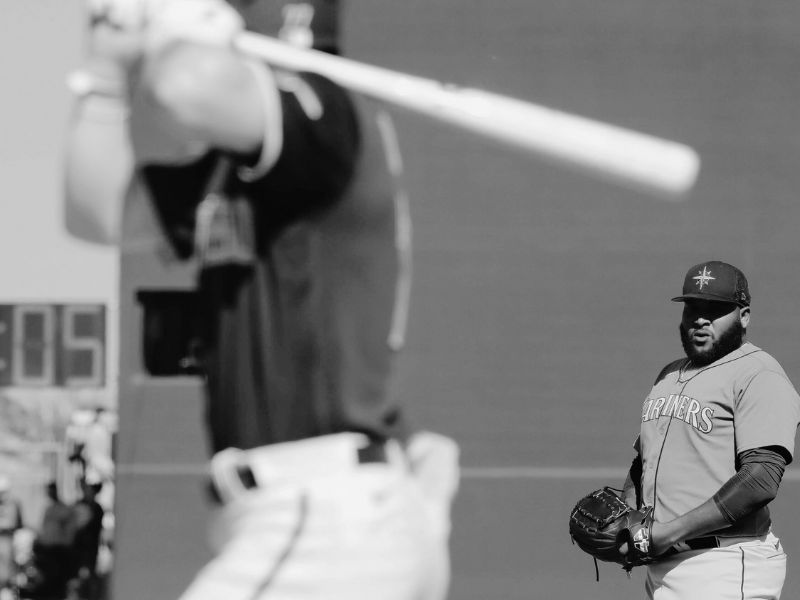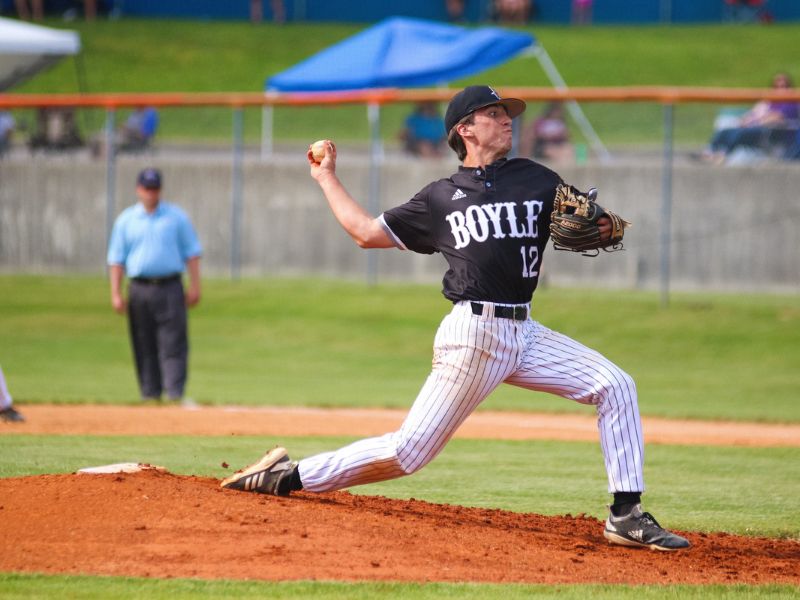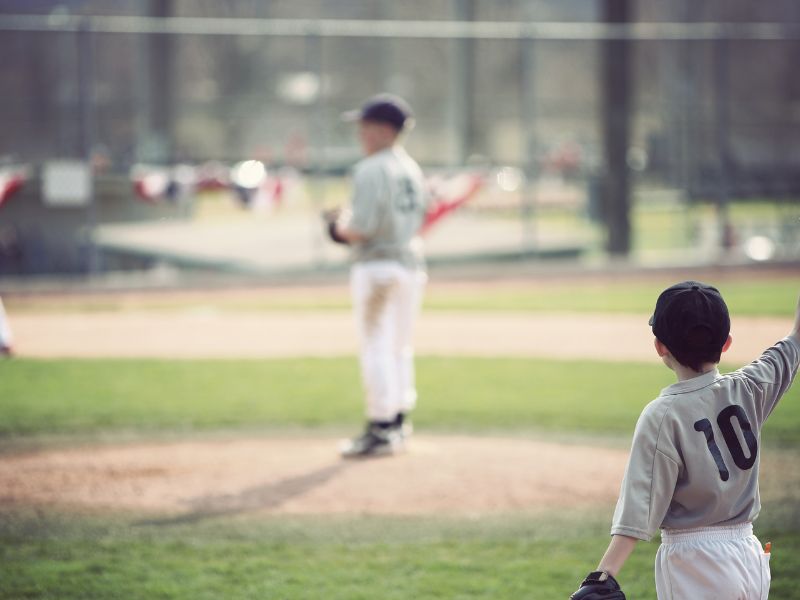When was the last time you heard that MLB rule made a big controversy? MLB 3 Batter Rule has caught a lot of attention and also sparked debate over the years since it came into effect.
I have always wondered why baseball managers frequently changed their pitchers. I felt like that was unfair. MLB 3 Batter Rule solved this problem.
Let me give you a simple idea at first then we will go into more details. MLB 3 Batter rule requires a relief pitcher to face at least three batters or see out the end of an inning before being substituted. This is done to speed up the game’s pace.
The rule has more purpose. Let’s know what the rule is, how it impacts the game, and what the fans feel about this rule.
Read More: 10 Worst Umpires in MLB Based on Different Seasons
The MLB 3 Batter Rule
If you’ve been following MLB recently, you’ve undoubtedly heard about the MLB 3 Batter Rule. But what exactly is it?
The MLB 3 Batter Rule stipulates that a relief pitcher must face at least three batters or finish an inning before they can be replaced.
Sounds simple, right? However, the implications of this rule are far more complex and significant than they might seem.
Now you may question, why on earth do we need to add another rule to this already complicated game?
Baseball games have been criticized for their length. This rule addresses that by reducing the number of pitching changes, which can often slow down the game considerably.

Moreover, it adds a layer of strategic depth for managers, who now have to think twice before making a pitching change. No longer can managers freely swap out pitchers to gain a matchup advantage; they have to consider the long-term impact on the game.
History of the MLB 3 Batter Rule
The MLB 3 Batter Rule came into existence in February 2020. At the start of the pandemic, I was scrolling through the baseball news and suddenly a news caught my eye. It was the MLB 3 Batter Rule. When I read the news article, I wasn’t sure whether to be happy or sad.
In 2019, the average MLB game was reported 3 hours and 5 minutes which is an all-time high. So, to make the game exciting and strategic, MLB has incorporated this rule.
It was a pretty bold move though. It got a mixed reaction from players, managers, and fans.
Fun Fact: Before the MLB, the rule was first applied to the minor leagues in 2019.
Why Was the Rule Implemented?
I have already told you that to increase the game’s pace this rule was implemented. The games were dragging on, sometimes exceeding three or even four hours, and fans were getting restless.
MLB knew they had to do something to keep the audience engaged; thus, the rule was born. But wait! This is not the only reason.
The rule also adds a layer of strategy to the game. Managers now had to think twice before making a pitching change, considering not just the immediate batter but the next two as well. This has made each decision more critical.

But it’s not just about the fans and the pace; it’s also about the players.
The rule has given the relief pitchers a significant role. The pitchers can’t just be brought in to face one batter anymore. This has caused teams to reconsider how they use their bullpens, which has affected how they build their teams and manage games.
Interesting Fact: The rule was proposed by MLB Commissioner Rob Manfred as part of his efforts to improve the pace of play and attract more fans to the game.
Impact on the Game
When a rule is introduced, it leaves quite a mark on the game. MLB 3 Batter Rule is no exception.
Time
You’ve probably noticed that MLB games are a bit quicker now. There are no endless pitching changes. The 3 Batter Rule has effectively cut down the average game time. So, no need to check your watch constantly.
Strategy
If you’re a fan of the mental aspects of baseball, you’ve likely found this rule to be a fascinating addition. Managers can no longer make quick, one-off pitching changes. You can witness a more complex and nuanced game, where every decision carries weight.
Players
The rule has had a profound impact on relief pitchers. You see, they now have to be more versatile and prepared to face a minimum of three batters. You get to see a more skillful display of pitching.
Read More: What Is A No Hitter In Baseball?
What Happens if a Team Violates the MLB 3 Batter Rule?
It is always fascinating to think about what will happen if you break the rules. But breaking the MLB 3 Batter Rule is not fun at all!
First off, let’s be clear: violating this rule is a big no-no. The MLB takes it seriously, and so should you. If a relief pitcher comes into the game and doesn’t face the required minimum of three batters, the team is subject to penalties. And we’re not talking about a slap on the wrist here.
The most immediate consequence is that the game’s umpire can eject both the pitcher and the manager from the game. Imagine the drama! You’re watching your favorite team, and suddenly, key players are sent off the field. It’s a game-changer, and not in a good way.

The ejection not only affects the current game but can also have repercussions for future matches.
But wait, there’s more.
The team can also face hefty fines. While this might not directly impact you, it does send a strong message about the integrity of the game you love. Teams are less likely to break the rules when there’s a financial sting involved.
What if There’s an Injury
The rule does have an exception for injuries or illnesses. However, the umpire has the final say on whether the condition is legitimate. So, if you see a pitcher suddenly clutching his arm, know that the umpire will be scrutinizing the situation closely.
So, why should you care? Well, these penalties maintain the spirit and fairness of the game, ensuring that each match is as exciting and legitimate as possible. You get to see teams at their best, competing within the rules.
How Do Fans Feel About the MLB 3 Batter Rule?
Ah, the MLB 3 Batter Rule, a topic that has sparked endless debates among fans like you. You’ve probably had a few heated discussions yourself, haven’t you? Well, let’s dig into what the fanbase really thinks about this rule and why it matters to you.
Not Everyone Is A Fan Of This Rule
Yes, you heard it right. Many traditionalists believe that the rule takes away from the strategic depth of the game.
You know, the classic pitcher matchups, the late-game drama, and the managerial chess moves that keep you glued to your seat. For these fans, the 3 Batter Rule feels like an oversimplification, a move to speed up the game at the cost of its soul.

Those Who Appreciate The Rule
If you’re a fan of a faster-paced game with fewer interruptions, you might be nodding your head right now.
This group argues that the rule keeps the action flowing and cuts down on the total game time, making it more accessible to new fans and more enjoyable for those with busy lives. After all, not everyone has the luxury to sit through a 4-hour game, right?
Why Should You Care
Well, the MLB is a fan driven sport. Your opinion, along with the collective voice of the fanbase, can influence future changes. If enough people voice their concerns or praises, who knows?
The rule could be tweaked, modified, or even scrapped. Your voice matters in shaping the game you love.
Future of the MLB 3 Batter Rule
MLB rules are not set for life. As you may have seen, pitch timer, limits on defensive shifts, and bigger bases are some of the rule changes coming in 2023. So, no one can guarantee you that the 3 batter rule will stay the same.
I’ve seen that this rule upset a lot of fans, and that’s why I think the rule can be changed or modified slightly.
Adjusting the Minimum Number of Batters
Right now, it’s set at three, but what if it were four or even two? This could either intensify the strategy involved or make it easier for teams to adapt. Imagine the new dynamics and tactics that would emerge!
Adding More Exceptions
Currently, the rule is pretty strict, but what if there were special circumstances where a pitcher could be swapped out earlier?
For instance, if a pitcher has already thrown a certain number of pitches in a game, could that be an exception?
Removing the Rule Entirely
This might be a shocker. While the rule aimed to speed up the game and add a layer of strategy, not everyone is a fan. Some baseball enthusiasts think the rule should be taken away.
So, what do you think? Are you in favor of tweaking the rule, or adding exceptions, or do you want to see it gone?
Frequently Asked Questions
1. Does the 3 Batter Rule Apply in Playoffs?
Yes, the MLB’s Three-Batter Rule is in effect during the playoffs. The rule applies consistently throughout the regular season and the postseason to maintain uniformity in the game.
2. What Is Rule 3 in Baseball?
Rule 3 in baseball pertains to the “Game Preliminaries,” which cover aspects like the lineup, batting order, and substitutions. It’s not to be confused with the Three-Batter Rule, which specifically deals with pitching changes.
3. Can 3 Teams From a Division Make the Playoffs MLB?
Yes, it’s possible for three teams from the same division to make the MLB playoffs. This can happen through a combination of division champions, wild card spots, and other playoff eligibility criteria.
4. Will the MLB 3 Batter Rule Undergo Any Future Amendments?
While there’s ongoing debate about the Three-Batter Rule, any future amendments would depend on feedback from teams, managers, and fans. The MLB is known for evolving its rules, so changes are possible.
5. What Is a 5 4 3 in Baseball?
A 5-4-3 in baseball refers to a double play that starts with the third baseman (position 5), goes to the second baseman (position 4), and ends with the first baseman (position 3). It’s a common sequence in defensive plays.
6. Do Relievers Have to Pitch to 3 Batters?
Yes, under the MLB’s Three-Batter Rule, relievers are required to pitch to at least three batters or finish the inning, unless they are injured or ejected.
Conclusion
The MLB’s 3 Batter Rule has been a game-changer in multiple ways. From its impact on the game’s pace and strategy to the varying opinions it has received from fans, this rule is undeniably a hot topic.
Personally, I like the idea of the MLB 3 Batter Rule. I like the game to be fast-paced and I like how the pitcher is tested with various batter on the pitch. In my view, the rule gives the pitcher more responsibility than he has ever got.
You May Also Be Interested In
What Is Chin Music In Baseball?
What Is A Perfect Game In Baseball
Average Baseball Pitch Speed By Age And Type
Major League Baseball Rain Delay Rules

Hello everyone. My name is Jason Butler, and I live in California, America. I was a professional AAA Minor League Baseball player. I lost my chance of playing MLB for injury issues, but I did not lose my love for baseball. I attended the coaching training program and am now working as a coach in a small school in San Diego.
I always love to share my experience and knowledge if that can help you. Play baseball, and stay fit.
